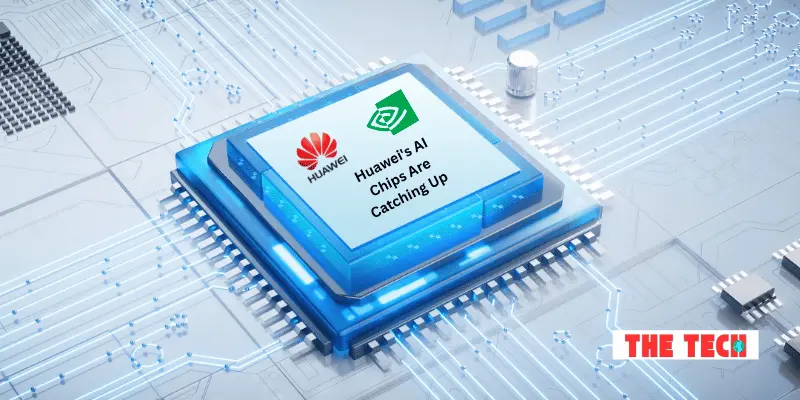Nvidia Faces Huge Losses as U.S. Rules Hit H20 Chip Sales in China
Published: May 30, 2025
Nvidia Faces Huge Losses as U.S. Rules Hit H20 Chip Sales in China, Nvidia, the world’s most valuable semiconductor company and a top name in AI hardware, is facing serious trouble in one of its biggest markets—China.
Due to stricter export control rules set by the U.S. government, Nvidia’s custom-built H20 AI chip, which was meant to meet previous U.S. restrictions, may no longer be allowed to ship to China.
This unexpected development could result in the company losing as much as $12 billion in revenue.
Even worse, Chinese companies are now shifting away from Nvidia’s chips and turning to Huawei’s homegrown AI processors, like the Ascend 910B and upcoming 910C, which are rapidly becoming more powerful and popular.
Why Nvidia Made the H20 Chip
In 2022 and 2023, the U.S. began placing restrictions on the export of high-end AI chips to China.
These policies were meant to stop advanced American technology from being used in military or surveillance systems by Chinese entities.
In response, Nvidia designed a set of limited-performance AI chips—including the H20, L20, and L2—which were intended to follow these new rules while still serving Chinese customers.
The H20 GPU, based on the powerful Hopper architecture (also used in the H100 chip), was the most advanced among them.
It became a key part of Nvidia’s China strategy.
However, the U.S. has tightened the rules again, and the H2O might not meet the new licensing requirements either.
More Articles
How Much Could Nvidia Lose?
Analysts say Nvidia could lose between $11–$12 billion in annual revenue if the H20 is completely banned.
China accounts for 20–25% of Nvidia’s data center revenue, so any disruption there is a big deal.
In the company’s latest earnings report, Nvidia revealed that it had already taken a $4.5 billion charge, partly due to inventory that may no longer be sellable.
This includes the H20 chips and other components tied to Chinese orders.
To avoid losing the market entirely, Nvidia has reportedly started offering the H20 at heavy discounts in China.
However, even low prices may not be enough to compete with Huawei’s growing presence and its new AI chip offerings.
Huawei’s AI Chips Are Catching Up

As Nvidia struggles, Huawei Technologies is moving fast.
The Chinese tech giant is producing powerful AI chips, such as the Ascend 910B, and will soon release even stronger models, including the 910C and 910D.
These chips are built using China’s own SMIC 7nm process, showing the country’s ability to make advanced chips despite U.S. sanctions.
Huawei’s chips are now being used by big Chinese companies such as Alibaba, Tencent, and Baidu, who were previously Nvidia’s top customers.
The Ascend chips, while still not as advanced as Nvidia’s flagship H100, are now good enough for most Chinese AI workloads, especially since they are easier to obtain without relying on U.S. export licenses.
CUDA vs. CANN – Software is the Real Battle
One of Nvidia’s biggest strengths has been its CUDA software platform, which powers most AI and machine learning models developed over the last decade.
Developers around the world rely on CUDA due to its flexibility, speed, and extensive community of support.
Huawei, on the other hand, uses its own platform called CANN (Compute Architecture for Neural Networks).
Migrating from CUDA to CANN isn’t easy—it can take companies 2 to 3 months to re-code their software and fine-tune performance.
But Chinese firms are increasingly making the switch. And once they do, they’re unlikely to go back to Nvidia, even if U.S. restrictions ease later.
This software shift is one of the biggest long-term threats to Nvidia’s dominance in China.
AI Boxes – Huawei’s Smart Strategy
To make adoption even easier, Huawei has started selling “AI boxes”—small, all-in-one machines that come with everything needed for AI development: processors, memory, software, pre-trained models, and more.
These AI boxes are designed to be plug-and-play, making them appealing to smaller companies, government offices, and anyone without the budget or expertise to set up a full AI system.
Huawei’s marketing strategy is clear: they want to become independent from foreign chipmakers like Nvidia by offering simple, affordable, and secure solutions that work out of the box.
Nvidia Looks Beyond China
With China becoming a tougher market to access, Nvidia is now turning its attention to other fast-growing regions.
The company is building strong partnerships in countries such as Saudi Arabia and the UAE, which are investing billions in building AI infrastructure.
These countries aim to establish themselves as AI hubs and are seeking reliable partners. Nvidia sees this as an opportunity to diversify its customer base and reduce its reliance on Chinese sales.
Still, it will take time for new markets to make up for the revenue that might be lost in China. And the competition in AI chips is growing everywhere.
What Nvidia’s CEO Says
Nvidia CEO Jensen Huang has been open about his disagreement with U.S. export policies.
In recent interviews, he stated that attempting to limit China’s access to U.S. chips might have the opposite effect, encouraging China to invest more in developing its technology and becoming self-sufficient.
Huang also warned that the assumptions underlying the export bans may not be realistic and could ultimately harm American companies more than they benefit.
He emphasized that Nvidia wants to stay compliant with all laws, but also needs to stay competitive in the global market.
Huang’s comments reflect a broader frustration among U.S. tech firms caught in the middle of rising tensions between the U.S. and China.
H20 vs. Ascend 910B – How Do They Compare?
| Feature | Nvidia H20 | Huawei Ascend 910B |
| Architecture | Hopper (trimmed) | Da Vinci |
| Performance | High (but limited) | Medium to high |
| Software Platform | CUDA | CANN |
| Availability in China | At Risk | Readily available |
| Ease of Use | Needs setup | Plug-and-play (AI box) |
| U.S. Export Restrictions | Yes | No |
While the H20 is technically more advanced, Huawei’s Ascend chips are more accessible, easier to deploy, and come with local support, giving them an edge in today’s political climate.
Final Thoughts – A Major Turning Point for Nvidia and the AI Industry
Nvidia’s challenges in China are more than just a bump in the road—they represent a major shift in the global AI chip landscape.
What was once a solid strategy (making special chips like the H20 to meet export rules) is no longer enough.
The rise of Huawei, combined with increasing local chip production and software independence, shows that China is moving rapidly toward self-reliance in AI technology.
And with other countries watching closely, we may see similar trends spread elsewhere.
For Nvidia, the road ahead will depend on how well it can adapt to geopolitical realities, build new markets, and continue to innovate in both hardware and software.
The AI race is no longer just about performance—it’s about supply chain resilience, international policy, and long-term strategy.
FAQs
The U.S. government tightened its export control rules to prevent advanced American technology from being used in China’s military and surveillance programs. Even though Nvidia’s H20 chip was designed to comply with earlier restrictions, it may still be too powerful under the new rules. As a result, Nvidia now needs special licenses to export these chips to China.
Analysts estimate that Nvidia could lose between $11 billion to $12 billion in annual revenue if the H20 is fully banned in China. China accounts for up to 25% of Nvidia’s data center business. This loss could impact the company’s growth and future earnings significantly.
Chinese tech companies are turning to Huawei’s AI chips, such as the Ascend 910B and the upcoming 910C and 910D. These chips are built using Chinese manufacturing and are not subject to U.S. export rules. While not as powerful as Nvidia’s top chips, they are becoming good enough for local AI workloads.
Yes, Huawei is quickly catching up, especially within China. Its Ascend chips are now widely adopted by Chinese companies and come bundled with easy-to-use AI development tools. Although Nvidia still leads globally in performance and software, Huawei is gaining ground with government support and rising demand.
As of now, Nvidia is not planning to exit China but is facing serious challenges. The company is offering deep discounts and exploring new ways to stay in the market under the restrictions. However, its long-term presence in China depends on future U.S. policies and China’s move toward local alternatives.
Bonus Info Points
- H20 Chip Was Designed for China: The H20 was a specially downgraded version of Nvidia’s powerful AI chips, created to comply with earlier U.S. export restrictions. Despite this, the latest tightened rules still require a license, putting its sale on hold.
- Huawei’s AI Ecosystem Is Growing Fast: Huawei is not only developing chips but also building a complete AI ecosystem, including its own AI frameworks, software stacks, and hardware bundles — making it easier for Chinese firms to adopt non-U.S. technology.
- Nvidia’s Price-Cutting Strategy in China: To remain competitive in China, Nvidia is offering deep discounts on its H20 chips, reportedly slashing prices by over 10% compared to earlier expectations. This is an attempt to regain market share and slow down Huawei’s growth.
- Chinese Cloud Providers Are Shifting Away from U.S. Chips: Major companies like Alibaba, Tencent, and Baidu are starting to rely more on domestic chips to avoid supply chain risks due to geopolitical tensions. This shift increases pressure on Nvidia’s presence in China.
- U.S.-China Tech War Intensifies: The H20 licensing issue is part of a larger U.S.-China tech conflict focused on AI and semiconductor dominance. These tensions are leading to faster development of alternative technologies in both countries, potentially reshaping the global AI chip market.

- Be Respectful
- Stay Relevant
- Stay Positive
- True Feedback
- Encourage Discussion
- Avoid Spamming
- No Fake News
- Don't Copy-Paste
- No Personal Attacks



- Be Respectful
- Stay Relevant
- Stay Positive
- True Feedback
- Encourage Discussion
- Avoid Spamming
- No Fake News
- Don't Copy-Paste
- No Personal Attacks





